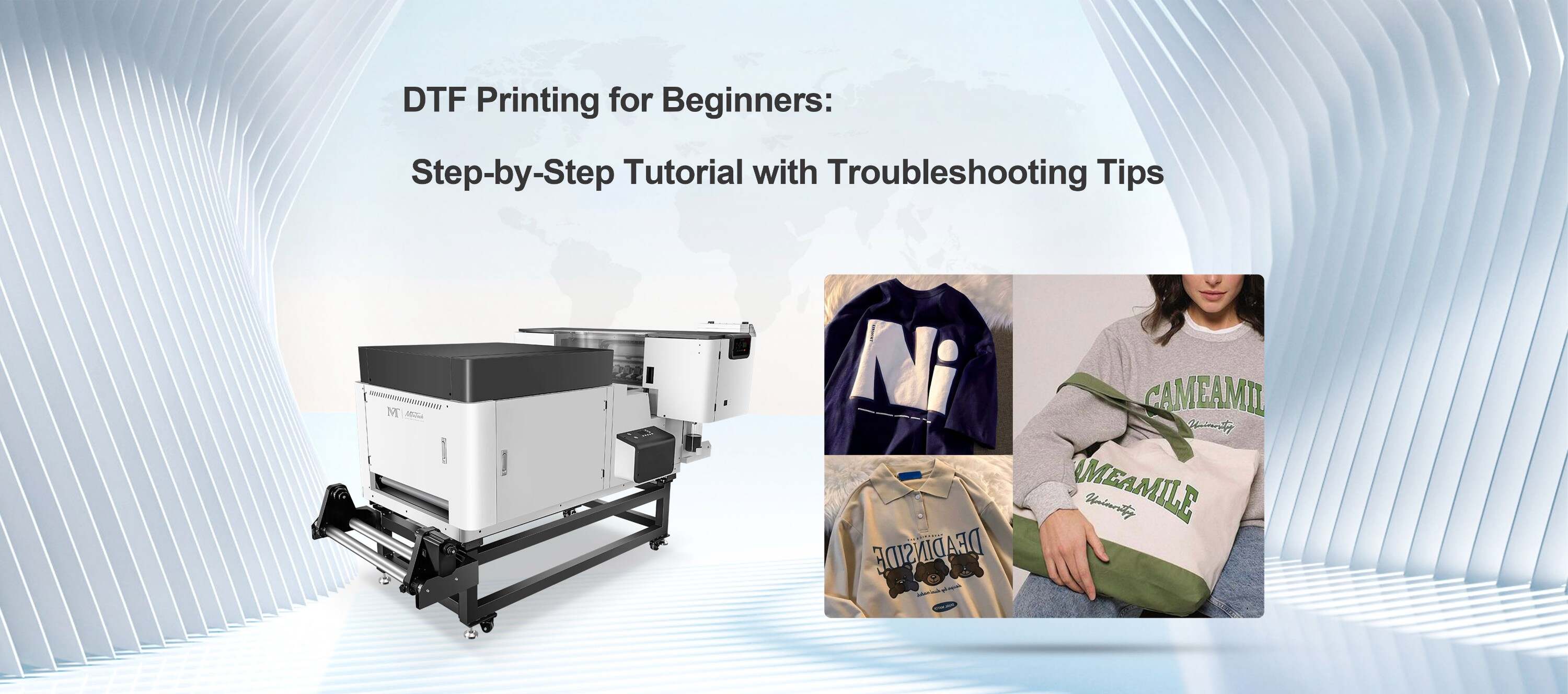DTF (Direct-to-Film) printing is a revolutionary fabric printing technique that allows users to transfer high-quality prints onto various fabrics using a special film, adhesive powder, and a heat press. Unlike traditional DTG (Direct-to-Garment) printing, DTF works on both cotton and synthetic materials without pre-treatment. Compatible with multiple fabric types No need for pre-treatment High durability and wash resistance Cost-effective for small and large-scale printing For professional DTF printing solutions, visitMTuTech DTF Printer. A specialized DTF printer is required to print high-quality designs on PET films using special DTF inks. DTF films act as the medium for transferring the design, while the powder ensures strong adhesion to fabric. Pigment-based DTF inks provide vibrant and durable prints. Proper RIP software is essential for color correction and white ink layering. A heat press is required for transferring the design onto the fabric at the correct temperature and pressure. Use graphic design software like Photoshop or CorelDRAW to create or edit your design. Ensure the resolution is at least 300 DPI for sharp prints. Load the DTF film into the printer and print the design with a layer of white ink underneath for opacity. Evenly sprinkle DTF powder onto the printed design while the ink is still wet, ensuring full coverage. Cure the powder-coated film using a heat press or oven at around 160°C for 2-3 minutes until the powder melts and bonds with the ink. Place the cured film onto the fabric and press it with a heat press at 160-180°C for 10-15 seconds. Peel off the film after cooling and press again with a Teflon sheet to enhance durability. Ensure proper curing of the film before pressing Increase heat press temperature or pressure Use high-quality DTF inks Adjust RIP software settings for optimal color output Regularly clean printheads to prevent ink blockage Use genuine, high-quality ink brands Ensure uniform powder distribution Shake off excess powder before curing Increase pressing time and temperature Avoid washing in hot water or using harsh detergents Clean printheads and nozzles regularly Store DTF films and powders in a dry place Use recommended inks to prevent damage to printer parts Choose high-thread-count fabrics for better adhesion Maintain correct temperature and pressure settings Optimize image resolution for sharp prints DTF printing is an excellent choice for beginners looking to create vibrant and durable prints on various fabrics. By following the step-by-step process and troubleshooting common issues, you can master DTF printing in no time. For the best results, consider investing in professional-grade DTF printing equipment likeMTuTech DTF Printer. DTF printing works on cotton, polyester, blends, and even leather, making it highly versatile. With proper application and washing, DTF prints can last for years without fading or peeling. No, you need a specialized DTF printer that supports pigment-based DTF inks. The recommended temperature is between 160-180°C, depending on the fabric type. DTF is more versatile as it works on a wide range of fabrics, unlike sublimation which is limited to polyester.
DTF Printing for Beginners: Step-by-Step Tutorial with Troubleshooting Tips
Introduction to DTF Printing
What is DTF Printing?
Why is DTF Printing Popular?
Essential Equipment for DTF Printing
DTF Printer
DTF Film and Powder
DTF Ink and Software
Heat Press Machine
Step-by-Step Guide to DTF Printing
Step 1: Preparing the Design
Step 2: Printing on DTF Film
Step 3: Applying Adhesive Powder
Step 4: Curing the Film
Step 5: Transferring the Print to Fabric
Step 6: Final Pressing for Durability
Common DTF Printing Issues and Troubleshooting Tips
Prints Not Sticking to Fabric
Poor Color Vibrancy
Ink Clogging Issues
Adhesive Powder Uneven Application
Film Peeling After Washing
Maintaining Your DTF Printer for Long-Term Use
Best Practices for Achieving High-Quality DTF Prints
Conclusion
FAQs
1. What fabrics work best for DTF printing?
2. How long do DTF prints last?
3. Can I use a regular printer for DTF printing?
4. What is the ideal temperature for transferring DTF prints?
5. Is DTF printing better than DTG or Sublimation?
DTF Printing for Beginners: Step-by-Step Tutorial with Troubleshooting Tips
27 March 2025
Online Inquiry
Lastest News
-
2:52 pm · 24 Apr 25
Best Fabrics for DTF Printing: A Comprehensive Compatibility Guide
-
2:05 pm · 23 Apr 25
DTF Printer Calibration Guide: Improving Print Accuracy and Color Output
-
3:10 pm · 22 Apr 25
How to Choose the Right DTF Printer for Your Apparel Brand
-
3:33 pm · 21 Apr 25
DTF Printing for Print-on-Demand Businesses: Integration Guide
